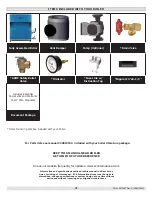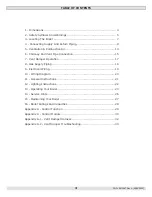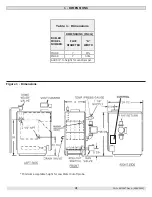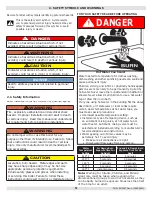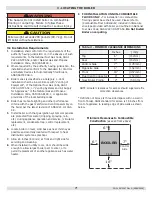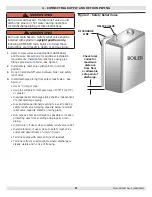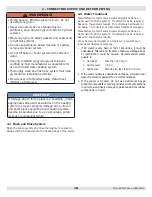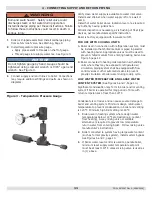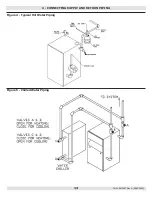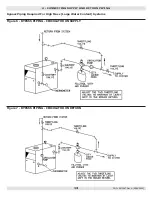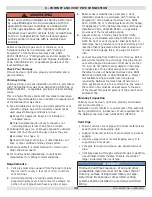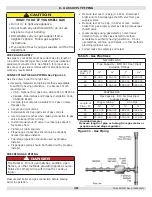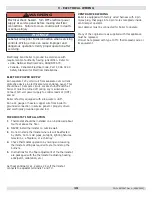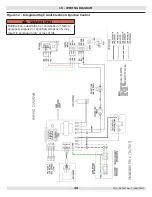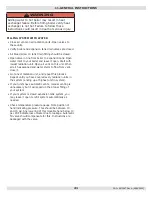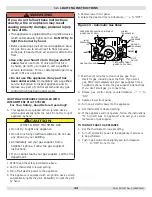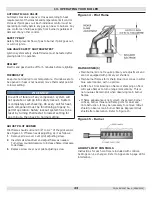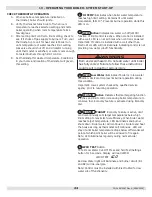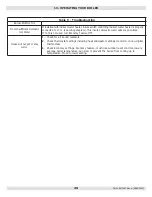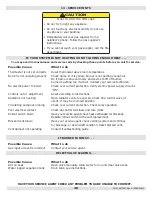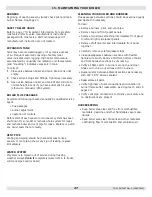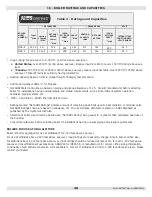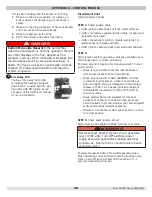
15
Boilers connecting to gas vents or chimneys, vent
installations shall be in accordance with “Venting of
Equipment”, of the National Fuel Gas Code, ANSI
Z223.1/NFPA 54 or “Venting Systems and Air Supply for
Appliances,” of the Natural Gas and Propane Installation
Code, CAN/CSA B149.1, or applicable provisions of the
local building codes.
Check Your Chimney
It must be clean, right size, properly constructed and in
good condition.
Chimney Sizing
Chimney sizing, and vent installation must be in accordance
with The National Fuel Gas Code, ANSI Z223.1/NFPA 54 or
CAN/CSA B149.1, or applicable provisions of local building
codes.
This is a high efficiency boiler with low stack temperature.
Following recommendations are in addition to requirements
of the National Fuel Gas Code.
1. Type B double wall vent pipe is recommended for vent
connector. Single wall vent connectors should not be
used unless following conditions are true:
a) Except for basement, boiler is not installed in
unheated space.
b) Total horizontal portion of vent connector, not
including elbows is less than 5 feet in length.
2.
Outside chimneys (i.e. chimneys exposed to outdoors
below roof line) should not be used unless they are:
a) enclosed in a chase, or
b)
lined with type B vent pipe, or listed flexible vent
liner, or other certified chimney lining system.
3.
Where possible it is recommended to common vent
boiler and water heater.
4.
For multiple boiler installations, consult boiler
manufacturer for venting recommendations.
6 - CHIMNEY AND VENT PIPE CONNECTION
WARNING
Boiler and venting installations shall be performed
by a qualified expert and in accordance with the
appropriate manual. Installing or venting boiler
or other gas appliance with improper methods or
materials may result in serious injury or death due
to fire or to asphyxiation from poisonous gases
such as carbon monoxide with is odorless and
invisible.
!
1.
Vent pipe must slope upward from the boiler not less
than ¼ inch for every 1 foot (21 mm/m) to verticle
vent terminal.
2.
Horizontal portions of venting system shall be
supported rigidly every 5 feet and at the elbows. No
portion of vent pipe should have any dips or sags.
Requirements
3.
Boiler series is classified as a Category I. Vent
installation shall be in accordance with “Venting of
Equipment,” of the National Fuel Gas Code, ANSI
Z223.1/NFPA 54, or “Venting Systems and Air Supply
for Appliances,” of the Natural Fuel Gas and Propane
Installation Code, CAN/CSA B149.1, or applicable
provisions of the local building codes.
4.
Inspect chimney. Chimney shall be lined. Verify
chimney is constructed according to NFPA 211 and
NFPA 54. Vent or vent connector shall be Type B or
metal pipe having resistance to heat and corrosion not
less than that of galvanized sheet steel or aluminum
not less than 26 gauge thick, 24 gauge for 6 and 7
inch.
5.
Connect flue pipe from draft hood to chimney. Bolt or
screw joints together to avoid sags. Flue pipe should
not extend beyond inside wall of chimney more than
1/4 inch. Do not install manual damper in flue pipe
or reduce size of flue outlet except as provided by
the latest revision of National Fuel Gas Code, ANSI
ANSI Z223.1/NFPA 54 or CAN/CSA B149.1. Protect
combustible ceiling and walls near flue pipe as
required by National Fuel Gas Code. Where two or
more appliances vent into a common flue, the area of
the common flue must be at least equal to the area
of the largest flue plus 50 percent of the area of each
additional flue.
Chimney Inspection
Chimney must be clean, right size, properly constructed
and in good condition.
Installation must conform to requirements of the authority
having jurisdiction or, in absence of such requirements, to
The National Fuel Gas Code, ANSI Z223.1/NFPA 54.
Vent Pipe
• Fasten sections of vent pipe with 3 sheet metal screws
at each joint to make piping rigid.
• Support horizontal portions of vent system to prevent
sagging.
• Use stove pipe wires or metal strapping every 5’ to
support pipe from above.
• Vent pipe through crawl space, use double wall vent
pipe.
• Vent pipe passing through combustible wall or partition,
use ventilated metal thimble. Thimble should be 4"
larger in diameter than vent pipe.
NOTICE
Minimum Vent Pipe Clearance - Wood and other
combustible materials must not be closer than 6”
from any surface of single wall metal vent pipe.
Listed Type B vent pipe or other listed venting
systems shall be installed in accordance with their
listing.
PN 240013087 Rev. A [09/30/2020]


